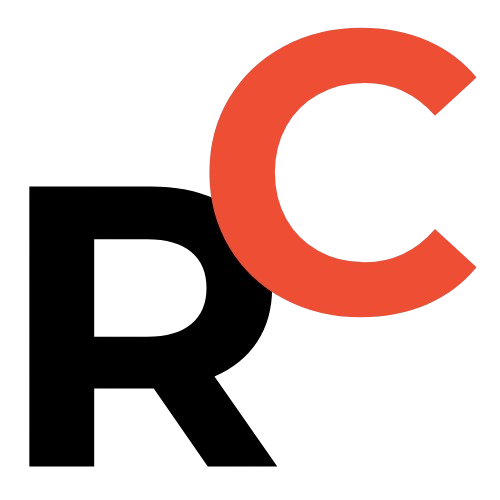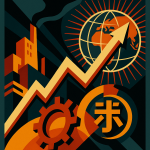Key Points
- China’s government, led by the Ministry of Industry and Information Technology (工业和信息化部), is enacting a significant policy shift in its solar (photovoltaic) industry.
- The initiative aims to move from a “grow-at-all-costs” mentality to high-quality, sustainable development, driven by directives from General Secretary Xi Jinping, the Party Central Committee (黨中央), and the State Council (国务院).
- New regulations focus on four key areas: streamlining the industry by phasing out outdated capacity, ending price wars and below-cost dumping, improving product quality and cracking down on IP infringement, and promoting industry self-regulation.
- The change signals an end to the era of ultra-cheap, race-to-the-bottom Chinese solar panels, potentially leading to more stable prices and improved financial health for manufacturers.
China’s new photovoltaic industry regulation is here, and it’s set to send major ripples across the global solar market.
On August 19, 2025, a powerhouse of Chinese government departments sat down for a serious talk about the state of the country’s solar, or photovoltaic (PV), industry.
This wasn’t just any meeting.
It was a joint symposium signaling a major policy shift, aimed at cleaning up the market and moving from a “grow-at-all-costs” mentality to one focused on high-quality, sustainable development.
If you’re an investor, founder, or involved in the renewable energy supply chain, this is need-to-know intel.

China’s new photovoltaic industry regulation is here, and it’s set to send major ripples across the global solar market.
On August 19, 2025, a powerhouse of Chinese government departments sat down for a serious talk about the state of the country’s solar, or photovoltaic (PV), industry.
This wasn’t just any meeting.
It was a joint symposium signaling a major policy shift, aimed at cleaning up the market and moving from a “grow-at-all-costs” mentality to one focused on high-quality, sustainable development.
If you’re an investor, founder, or involved in the renewable energy supply chain, this is need-to-know intel.
Who’s Driving This Change? A Government-Wide Push
The sheer number of top-tier government bodies involved tells you how serious this is.
This initiative is being spearheaded by:
- The Ministry of Industry and Information Technology (Gongye He Xinxi Hua Bu 工业和信息化部)
- The Central Social Work Department (Zhongyang Shehui Gongzuo Bu 中央社会工作部)
- The National Development and Reform Commission (Guojia Fazhan Gaige Weiyuanhui 国家发展改革委员会)
- The State-owned Assets Supervision and Administration Commission (Guoyuan Guoyou Zichan Jiandu Guanli Weiyuanhui 国务院国有资产监督管理委员会)
- The State Administration for Market Regulation (Shichang Jianguan Zongju 市场监管总局)
- The National Energy Administration (Guojia Nengyuan Ju 国家能源局)
Led by Minister Li Lecheng (李乐成) of the MIIT, the meeting brought together key players from manufacturing giants to the China Photovoltaic Industry Association (Zhongguo Guangfu Xingye Xiehui 中国光伏行业协会).
The mandate comes from the very top: General Secretary Xi Jinping, the Party Central Committee (Dang Zhongyang 黨中央), and the State Council (Guowuyuan 国务院).
The message is clear: The wild west days of China’s solar boom are over.

Resume Captain
Your AI Career Toolkit:
- AI Resume Optimization
- Custom Cover Letters
- LinkedIn Profile Boost
- Interview Question Prep
- Salary Negotiation Agent

The 4 New Rules of the Game for China’s Solar Sector
The symposium laid out four key directives to clean up the industry’s competitive landscape.
Here’s a breakdown of what each one means for the market.
1. Streamlining the Industry: Phasing Out Outdated Capacity
The government is calling for much tighter management of new investments in the PV sector.
More importantly, they’re pushing to get rid of old, inefficient production capacity using market-based and legal tools.
What this means: This is a classic industrial-upgrade play. Expect a consolidation in the market where smaller, less efficient factories might get squeezed out. The focus will shift towards factories that can produce next-gen, high-efficiency solar tech. For buyers, this could mean a more reliable, but potentially less fragmented, supply base.
2. Ending the Price Wars: Cracking Down on Below-Cost Dumping
This is a big one.
- Establish better price monitoring systems.
- Take action against companies selling products below cost.
- Penalize false marketing and other non-compliant pricing tactics.
Authorities plan to curb the “disorderly low-price competition” that has defined the industry for years.
How? By:
- Establishing better price monitoring systems.
- Taking action against companies selling products below cost.
- Penalizing false marketing and other non-compliant pricing tactics.
What this means: The era of ultra-cheap, race-to-the-bottom Chinese solar panels could be ending. While this might put upward pressure on prices, it’s a huge win for the financial health of the industry’s manufacturers. It signals a move towards value and profitability over pure market share, which could stabilize the entire global market.
3. Quality is King: A New Standard for Products & IP
The new regulations are taking a hard line on quality.
Regulators will be cracking down on companies that:
- Cut corners on quality control.
- Exaggerate the power output and specifications of their products.
- Infringe on intellectual property rights (IP).
What this means: This is a direct shot at improving the reputation and reliability of “Made in China” solar products. For international buyers, this could bring much-needed peace of mind and reduce the risk of receiving underperforming panels. The focus on IP rights also suggests a maturing ecosystem where innovation is protected, not just copied.
4. Industry Self-Regulation (with a Government Nudge)
Finally, the government isn’t just dictating rules from above.
They are empowering bodies like the China Photovoltaic Industry Association to help enforce fair competition and orderly development.
The goal is to get the industry itself to champion:
- Technological innovation.
- Strict quality and safety standards.
- A collective effort to maintain a healthy market.
What this means: This is a smart governance strategy. By letting the industry help police itself, the rules are more likely to be practical and effective. It shows a desire for long-term, sustainable health rather than just short-term, heavy-handed control.
The Bottom Line: A Maturing Market
- From Quantity to Quality
- From Price Wars to Profitability
- From Chaos to Controlled Competition
The key takeaway is that China is forcing its massive solar industry to grow up.
The focus is shifting decisively from quantity to quality, from price wars to profitability, and from chaos to controlled competition.
For anyone in the tech, investment, or renewable energy space, these changes are critical to watch.
This move to enforce a new China photovoltaic industry regulation will redefine the cost, quality, and competitive dynamics of solar energy for years to come.
![China's Financial Titans (PBOC, CSRC, NFRA) to Unveil Market Stability Policies: What Investors & Techies Need to Know for May 7th [FreshFromChina]](https://freshfromchina.com/wp-content/uploads/2025/05/China_s_Financial_Titans__PBOC__CSRC__NFRA__to_Unveil_Market_Stability_Policies__What_Investors___Techies_Need_to_Know_for_May_7th____FreshFromChina-150x150.png)


![China's MIIT Signals Major Push for General and Industry-Specific AI Large Models [FreshFromChina]](https://freshfromchina.com/wp-content/uploads/2025/05/China_s_MIIT_Signals_Major_Push_for_General_and_Industry-Specific_AI_Large_Models____FreshFromChina-150x150.png)

